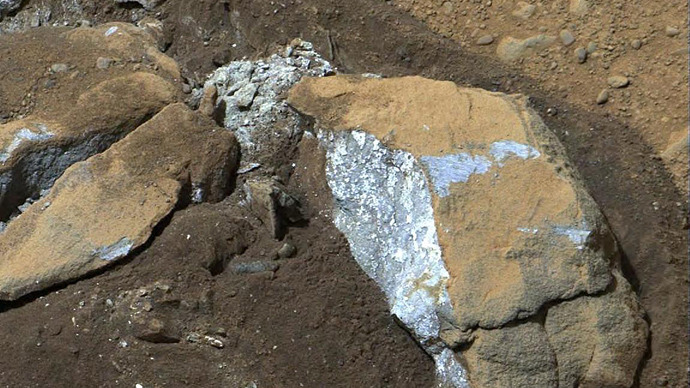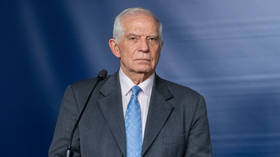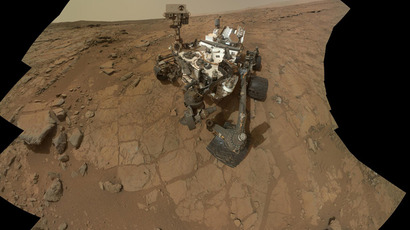‘Ultimate destination’: NASA sets Mars walk as top priority

After NASA’s manned moon landing in 1969 the US space agency is now focusing its resources on sending humans to Mars by 2030, outsourcing near-Earth missions to private contractors, NASA’s chief announced Monday.
Walking on Mars is human destiny, NASA administrator Charles
Bolden told experts at a conference at George Washington
University, and despite the ongoing economic crisis, the American
space program is ready to set new records.
“A human mission to Mars is today the ultimate destination in our
solar system for humanity, and it is a priority for NASA. Our
entire exploration program is aligned to support this goal,”
Bolden said.
President Barack Obama requested about $17.7 billion for NASA in
2014 which Bolden said is a “vibrant and coordinated strategy
for Mars exploration.”
The biggest difference in the new budget is the introduction of a
new asteroid initiative, which should enable NASA to divert
threatening asteroids headed towards Earth. The proposal includes
sending a robotic spacecraft by 2025 to a nearing asteroid and
redirecting it into orbit around the Moon. An asteroid mission
Bolden argues would provide the necessary experience towards
eventual human missions to Mars.
However, many challenges in the space program must first be
overcome, including medical concerns for the safety of the
passengers in high-radiation environments for such extended
periods.
US astronaut Scott Kelly is set to spend one year in space in 2015,
to better understand how prolonged zero gravity exposure affects
bone density, muscle mass and vision. Current missions to the ISS
last no more than 6 months.
In order to investigate the physical and psychological effects of
spending such a long period in space in February 2011 a six-strong
crew from Russia, China, Italy and France spent some 520 days in a
specially designed capsule on earth.
NASA also plans to announce a specifically chosen crew of some 20
trainee astronauts who “will be among the first trained
specifically for long-duration space flights,” said Bolden.
Bolden is optimistic that by the 2030s, the US can design a space
vehicle capable of traveling on the seven-month or longer flight to
Mars and then return to Earth. Experts estimate that another 40 ton
package, including air supply, would be needed to maintain a human
habitat on Mars.
“The US has demonstrated that we know how to get to the Moon,”
Bolden said. “What we have not demonstrated and what I think
everyone in this room - well most people in this room will concede,
is that there are technological gaps to sending humans to an
asteroid and to Mars,” Bolden said at the conference.
The US has repeatedly sent successful robotic missions to Mars, the
most recent being the Curiosity rover in August 2012.
NASA now hopes the US Congress will approve outsourcing to private
contractors all future rocket missions to low earth orbit in order
to concentrate on deep space exploration instead.

Since the retirement of the Space Shuttle fleet in 2011 for all manned flights to the earth’s orbit, the US at the moment solemnly relies on the Russian space program.
Congress must approve the new budget, otherwise the US would have to extend a contract with Roscosmos and pay
“significantly more” to use the Soyuz rockets, Bolden told Bloomberg Television's “Capitol Gains.”
The agency argues that it requires full funding to develop a domestic private industry to transport US scientists to the ISS and low-Earth orbit by 2017. If this fails, Bolden said, it would require NASA to renegotiate a contract with the Russians, under which NASA currently pays $70 million for US crew to fly to the ISS.
This, Bolden argues would be an embarrassment for US space program as it will
“allow the Russians to begin to believe that we are not committed to reliance on American industry and we're not committed to an American capability to get our own astronauts into space. They'll name their price, and my guess is it will be significantly more than $70 million.” Bolden said that a new space race is on between private enterprises,
“American companies are racing each other.” Boeing, SpaceX, Sierra Nevada companies are
“all racing to see who gets to the finish line and who wins a contract to carry American astronauts and our partner astronauts to the International Space Station, hopefully by 2017,” Bolden said.
On April 30 NASA said that it renegotiated a $424 million contract with Roscosmos for ISS transportation services in 2016, which will include six seats in Soyuz rockets with return and rescue services extending through June 2017.














